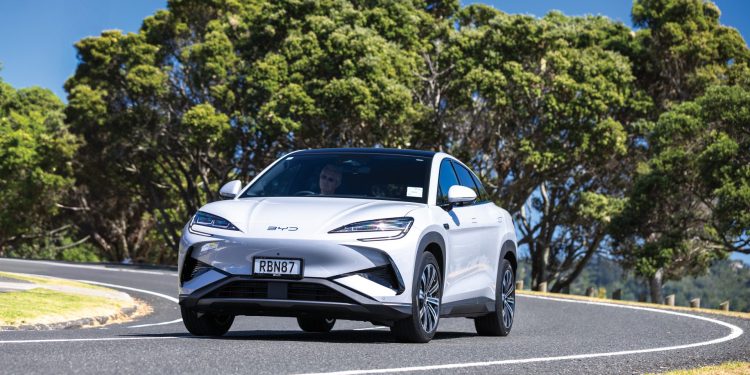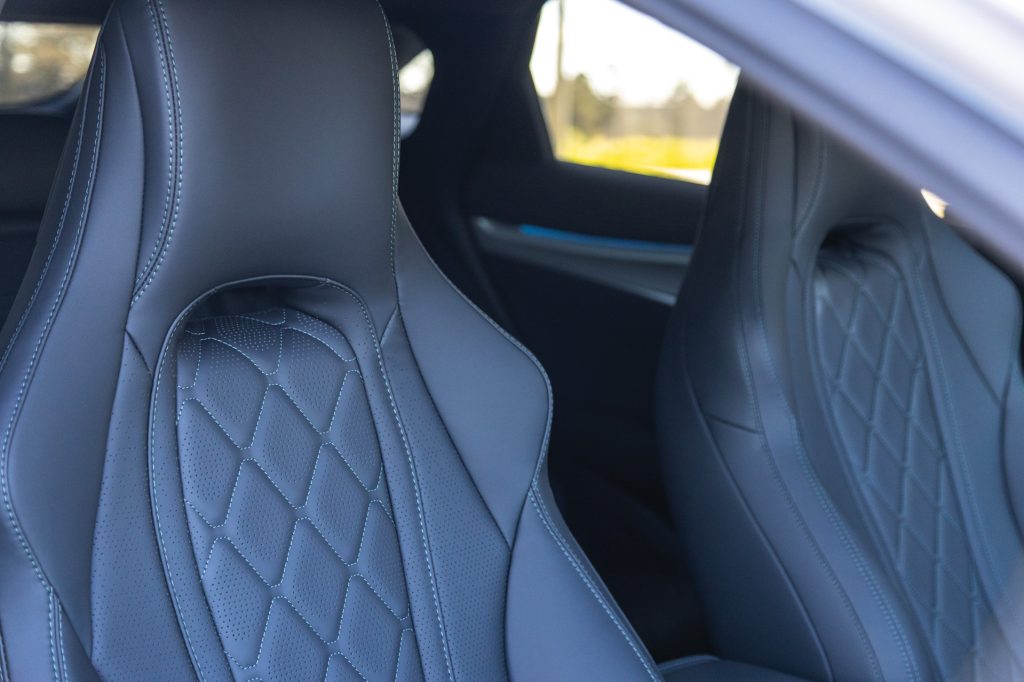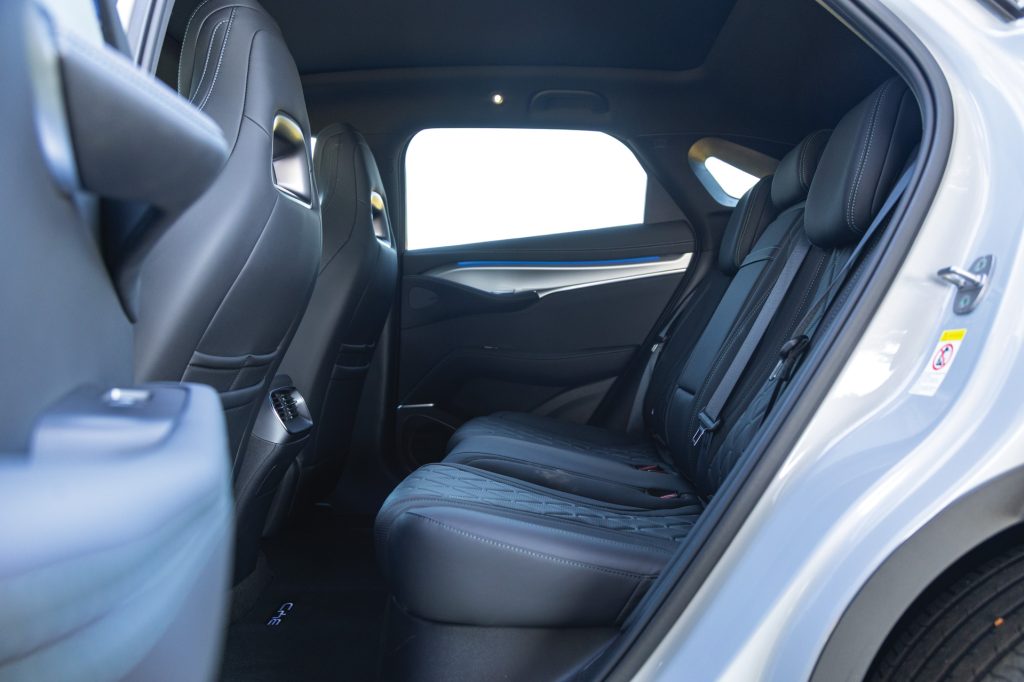2025 BYD Sealion 7 Premium Review
Words: Peter Louisson | Photos: Alex Schultz
Confused by BYD’s oceanic series nomenclature? Think of the new electric Sealion 7 as a raised up Seal with an SUV body. It’s gunning for Tesla Model Y.
Amongst the plethora of new vehicle releases promised by BYD for 2025 is this, the Sealion 7,
on sale now. This uses the same platform, motor(s) and battery as the Seal sedan. The latter is a handy 83kWh Blade LFP battery pack. When we picked it up with all the electrons fizzing, the DTE estimate wasn’t far off 550km (NEDC; WLTP is 482km). It used up just three per cent getting home, around 11km. Not bad, and we hadn’t even discovered the Eco mode at that point.
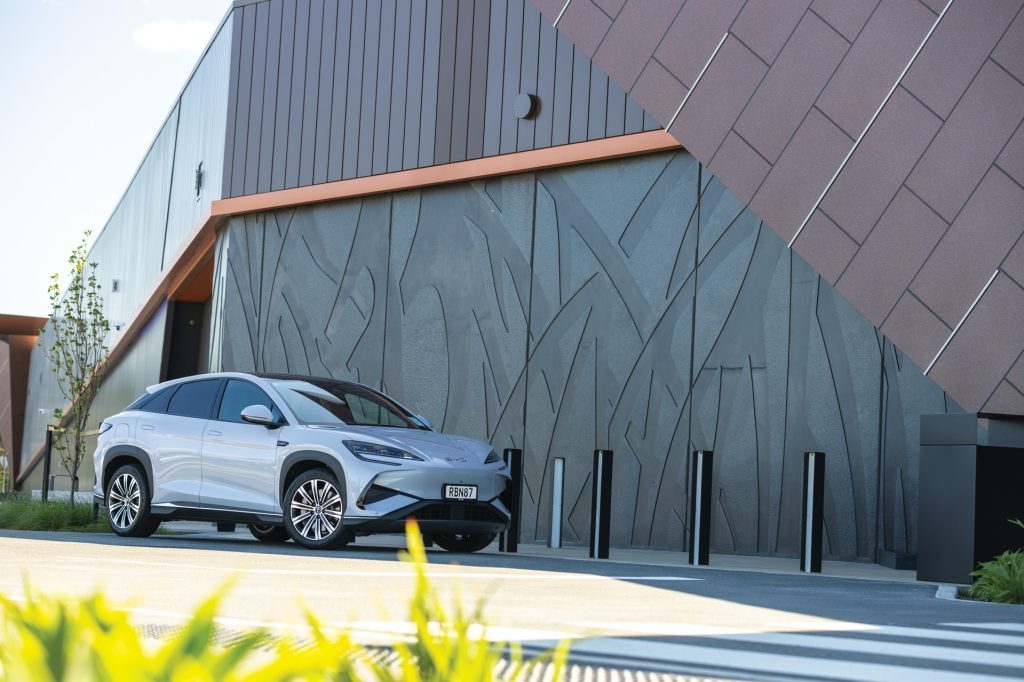
A pair of Sealion 7s
The Sealion 7 comes in two varieties, a rear-wheel drive Premium and an all-wheel-drive Performance version. The latter has less range because of its burlier dual-motor set-up.
On price, the Premium model kicks things off at $67,990. It’s up against Tesla’s Model Y that costs around $5k more. Only the Musk model has a smaller battery, not as much range at 455km, and nor is it as quick (0-100 6.9 vs 6.7sec).
The Premium’s other rival is the Kia EV5 Light, priced the same. Only the BYD’s quicker, and EV5 is front drive versus rear drive for the SL7.
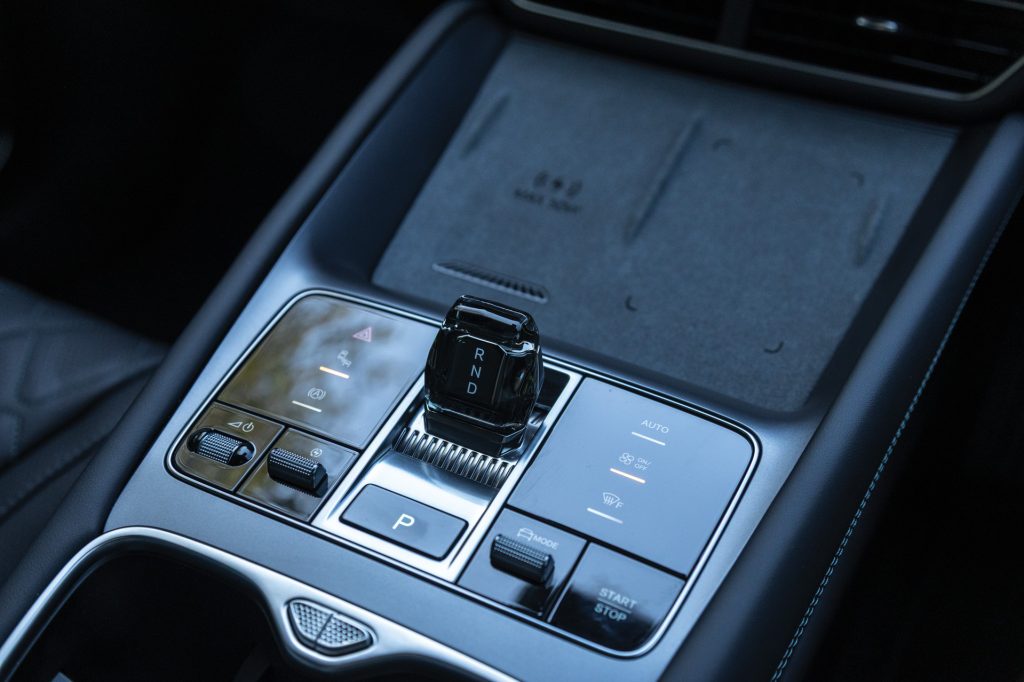
Want more go? The Sealion 7 Performance variant costs $79,990. It rivals the Model Y Long Range, costing over $80k. The Tesla can travel a claimed 533km per charge vs 456km for the SL7 P. But the BYD gets the bragging rights at 4.5sec 0-100km/h vs 5.0sec for the Tesla. And both Sealions have a V2L facility, along with an included adaptor.
So Tesla has yet another thing to worry about this year, though the Model Y update is just around the corner. We prefer the look of this one though. Both have fastback styling but this doesn’t really have a bad angle, looking assertive up front with its sporty bumper, X face and with a sweet flowing profile. The concealed door handles emerge with a hidden BYD logo. Open these and slide on in, whereupon the powered driver’s seat snugs up to the wheel.
It’s Seal-like inside and looks and feels just as premium, right down to real leather for the seat coverings and steering wheel wrap. Power operation extends to the lumbar support and squab roll, contributing to a comfy ride.
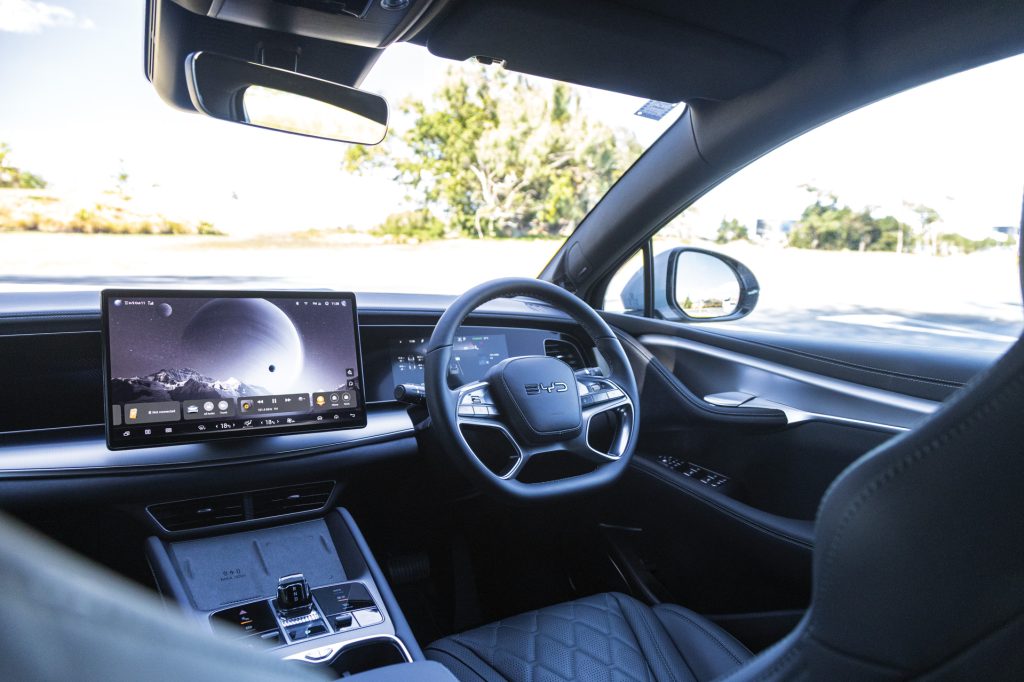
So sorted
The touchscreen system is familiar BYD fodder with its rotating display. Oddly, if you’re driving it hard, the screen sometimes thinks it should do a 90-degree rotate, and then thinks better of it.
If you’re familiar with BYD safety items, the usual applies; each time you push the start button, the first thing to do is nix all the lane keeping gizmos as they mess with the steering. And the overzealous distraction warning is just painful so turn that off. So too the overspeed warning.
But that would appear to be about the beginning and end of the minor Sealion 7 annoyances. For this is genuinely a sorted thing. It is almost ridiculously hushed, with the worst in-cabin noise figures being not much above the mid60s in terms of dBs. Laminated glass helps, as do EcoContact 6 tyres. They have generous sidewalls too which contributes to ride comfort so typical of BYD product; it’s plush as. Well shaped seats with lots of adjustment help, even if you seem to ride a little high. That enhances the outward view, though the slit of a window at the rear means you rely more on external rear view mirrors to see what’s behind. Beware the laid back A pillar hiding things at intersections, but that’s part and parcel of modern aero styling.
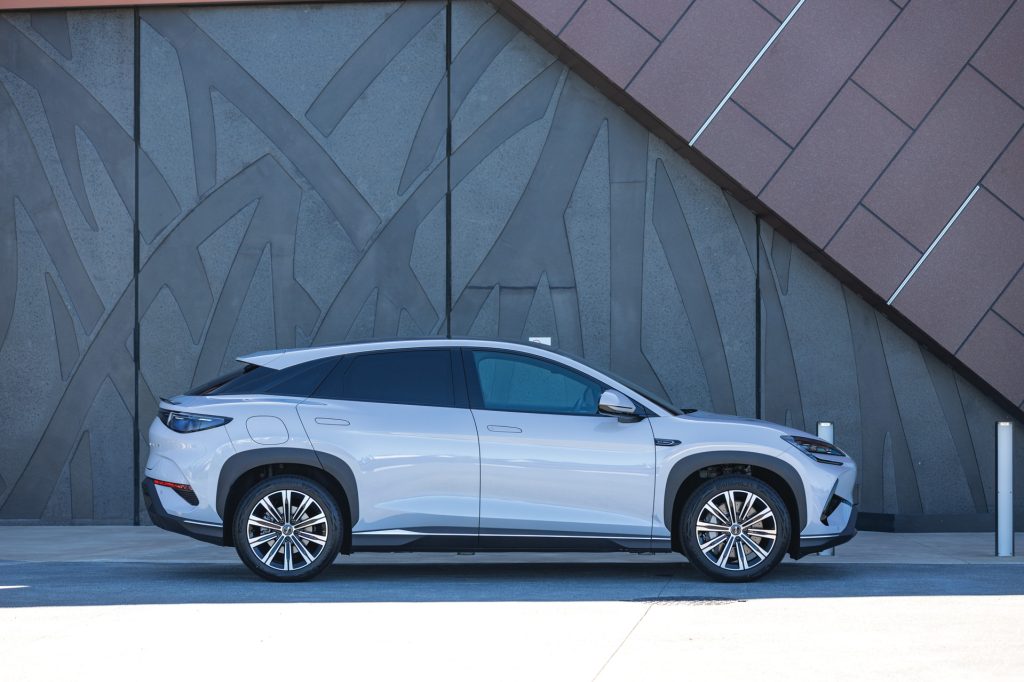
On the go
It’s the handling that’s, if anything, even more of a standout than ride quality. With double wishbones front, multilink rear and frequency selective damping, this corners with confidence. And it displays typically rear drive character too, tightening the line as you gently accelerate through a corner. Yes, there’s a bit of roll as expected of something in this genre but it’s all so serene, so locked down.
Assured dynamics make the quite reasonable performance seem almost disappointing. It leaves the electric theatrics to the AWD Performance version. Not that the Premium is tardy, comfortably meeting its 6.7sec sprint time. And there’s nothing amiss with an overtaking time in the mid-threes either. Both of these figures, by the by, comprehensively eclipse those of the $10k less expensive Sealion 6 Dynamic PHEV (8.6, 6.0, respectively).
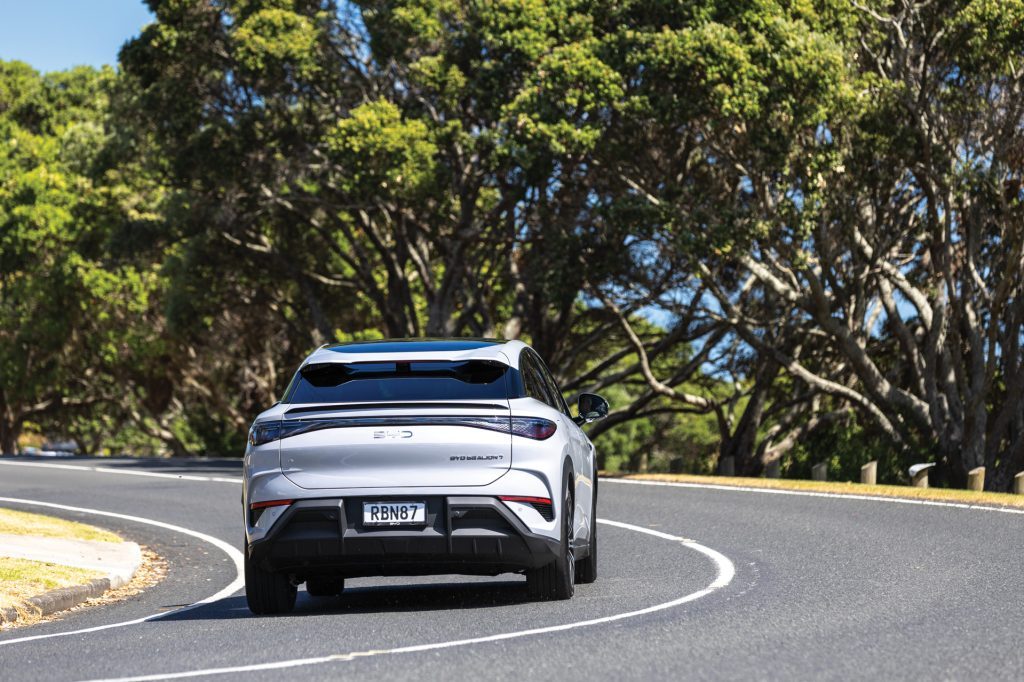
Stealthy progress
With EVs it’s all done so smoothly and silently, and perhaps this in part explains why it doesn’t seem that quick. But with 230kW/380Nm on tap it really is.
However, this masters on range as much as anything, rated at 482km. A heat pump means AC makes no odds to distance per charge. Energy use for us averaged 19kWh/100km.
Hooked up to a 150kW fast charger and you’ve another 400km odd in 32min (10-80 per cent). Or you can overnight recharge using an 11kW three-phase home wallbox.
There are three modes that have an influence on energy use; Eco, Normal and Sport. Each gives an uptick in performance, more noticeable from Normal to Sport than from Eco to Normal. So on motorway travel at a constant speed you can save on energy use, and it’s the same in town where lower speeds don’t put such demands on battery reserves.
Energy recuperation you set at either low or high, the former slowing the vehicle gently, the latter a little more so. These are in the central touchscreen rather than on paddles. There’s no single-pedal drive mode. We’d imagine most will leave the recoup on high. And on the slowing front, this is a reasonably substantial vehicle at 2225kg. Despite having ventilated discs at all four corners, we couldn’t better an emergency stop of 38m. That said, the brakes work just fine in typical use. And with energy recuperation on high, you don’t need to activate them that much.
Premium kit
Being a more premium vehicle, this naturally comes with a powered fifth door. Behind that is 500L of cargo space, while at the north end is another 58L in a generous frunk. We could pack our golf clubs and trundler in the boot but only just; readjusting the backrest angle made things easier. It’s always the longest club, the driver, that makes life tricky.
But wait, there’s more storage beneath the two-level boot floor, a substantial area (78L) that’s only partly filled by the portable charger and V2L adaptor. And in the back there’s generous room for three, despite the roofline.
BYD likes their base level models to have almost as much spec as their upper level variants. The Premium Sealion 7 features seat ventilation on top of the seat heating facility, and a wheel warmer. There’s a Qi charger too, and a place for another phone alongside. Below that is an open storage area for what have you. And above you is a full panoramic glazed roof, up front a head-up display.
There are also multiple entry options, using iPhone, key fob, push pads or the BYD app. The car is Internet connected and has wireless hook up of ACP and AA. Its big central screen offers great resolution – though you notice oily fingerprints in the wrong light – and a 360-degree camera is so handy for parking duties.

Lots of options
So now you have the option of various Sealions, at sixes and sevens, if you will. Is the SL7 worth the $10k extra over the SL6 Dynamic PHEV? That depends. The latter has vastly more range if you do lots of intercity trips and don’t care to stop to recharge. But we’d rather the fancier look, the extra urge and the superb rear-drive dynamics of SL7. We could work around the range aspect which is no big deal any longer. Kia’s EV5 may be slightly more practical but it won’t see which way the SL7 went for performance or dynamics. And Tesla? Well, SL7 is less expensive and quicker, and doesn’t come with the Musk baggage either. Plus, there’s a strong warranty, six-years and 150,000km for the car, and eight years and 160,000km for the battery.
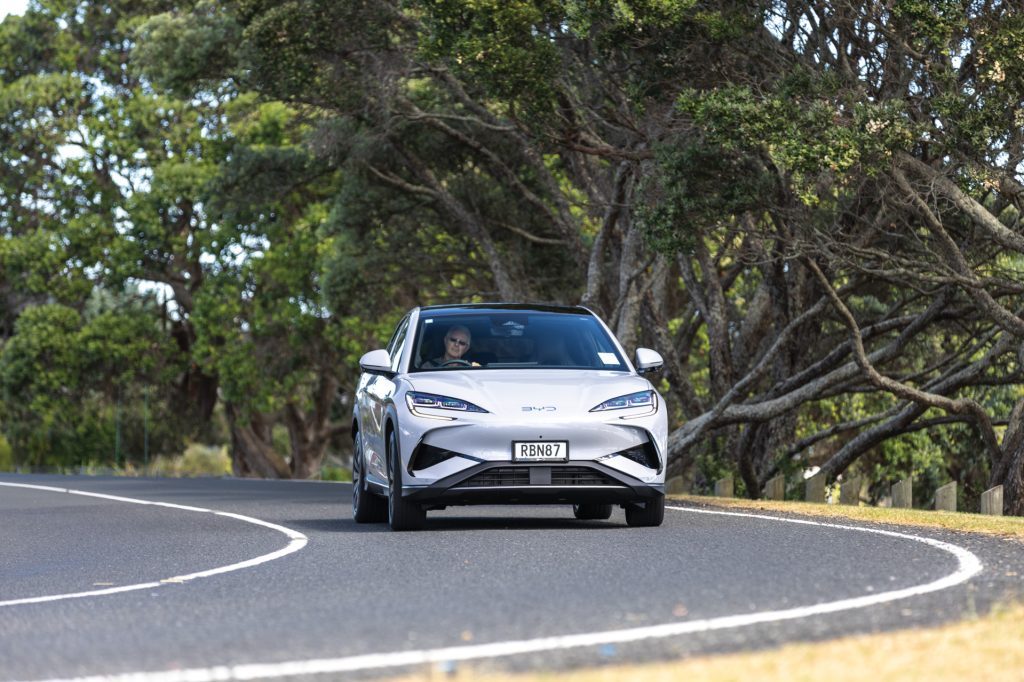
BYD Sealion 7 premium
$67,990 / 18.3kWh/100km / 0g/km
0-100 km/h 6.50s
80-120 km/h 3.56s (100.5m)
100-0 km/h 38.4m
Speedo error 97 at an indicated 100km/h
Ambient cabin noise 65.9dB@100km/h
Motor output 230kW
Max torque 380Nm
Battery 82.56kWh
Range 482km
Drivetrain Single-speed auto / RWD
Front suspension Wishbones/ swaybar
Rear suspension Multilink / swaybar
Turning circle 11.7m (2.55 turns)
Front brakes Ventilated discs
Rear brakes Ventilated discs
Stability systems ABS, ESP
Safety AEB, ACC, BSM, LDW, RCTA, ALK, AHB
Tyre size f-235/50R19 r-255/45R19
Wheelbase 2930mm
L/W/H 4830 / 1925 / 1620mm
Track f-1620mm r-1660mm
Luggage capacity f-58L r-578L
Tow rating 750kg (750kg braked)
Service intervals 12 months / 20,000km
Scheduled servicing 3yrs / 60,000km
Warranty 6yrs / 150,000 km
ANCAP rating Not yet rated
Weight (claimed) 2225kg


